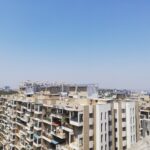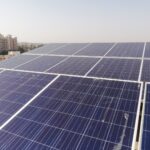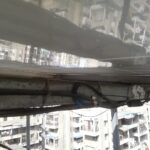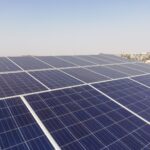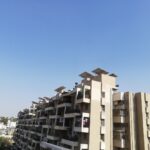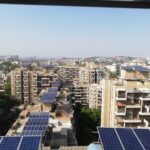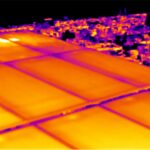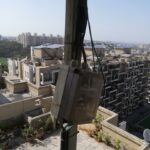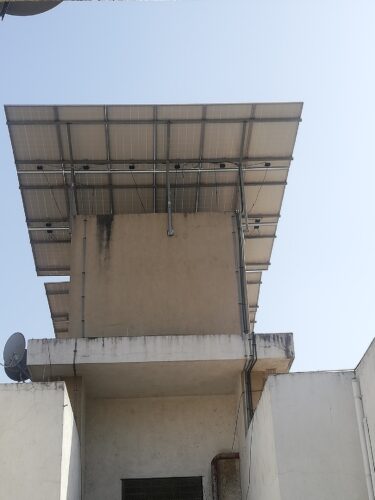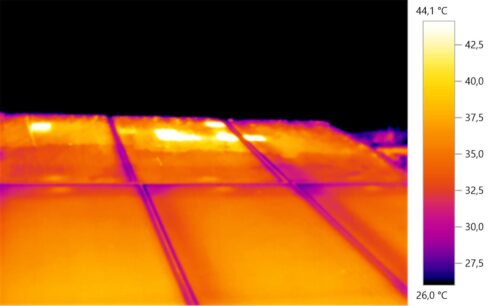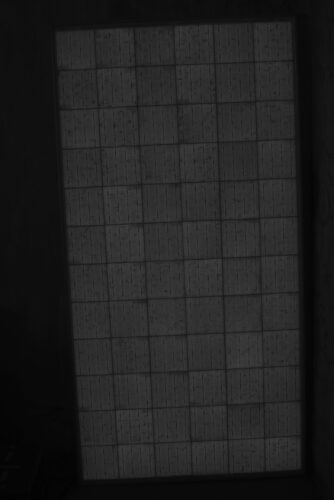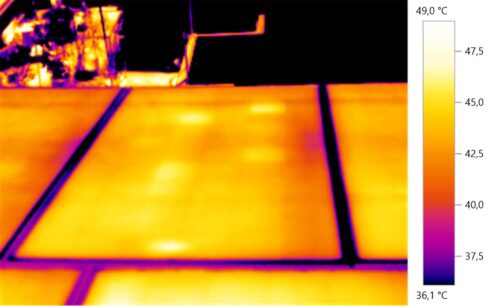Site III.6
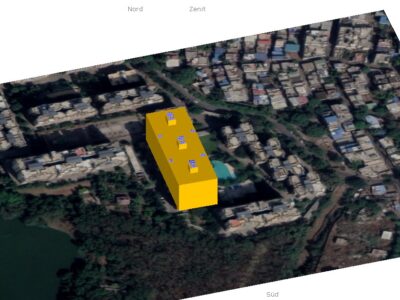
Site ID
III.6
Health

COD
2017
Nominal Capacity
300 kWp
Average Specific Yield
n/a kWh/kWp
Total Estimated Loss
3.5%
Possible Gain
10% to 15%
CAPEX, OPEX
0.14 ₹/Wp, 0.1 ₹/Wp/a
Expenditure / Energy
N/A
Abstract
The PV plant is likely affected by an early stage of PID. Electroluminescence imaging did not reveal significant mechanical damages. Hotspots induced by heavy soiling were discovered though IR inspection. Regarding safety requirements, the mounting structure hangs beyond the roof edge (it shall considers DIN 1055). It is recommended to (i) clean all the modules including those with difficult access, (ii) validation that all strings and module connectors are closed (iii) implement anti-PID measures. The estimated production boost expected by the retrofitting actions lies between 10% and 15%.
Main Findings
No weather station has been installed and the Performance Ratio is not tracked.
The PV system is built with an overhang of up to 2 meters over the roof edge. Static safety is therefore not guaranteed.
The module fasteners cannot be opened, which makes maintenance impossible.
Open module plugs lead to not producing strings. This could be measured on the inverter.
Some parts of the cables are exposed to UV radiation. Pipes conveying cables are brittle and some parts have already broken.
Several shading problems were found caused by roof structures.
Heavy partial pollution creates hotspots. These not only lower the yield but also make the modules age faster.
Since the modules cannot be removed, only one electroluminescence sample could be taken. This showed no mechanical damage.
To the negative side of the string, the modules may show first signs of PID.
Impact on Performance
Heavy Soiling
Soiling measurements were conducted before and after cleaning. The estimated soiling loss is on average 3.5%. However, the measured modules were much cleaner than modules that are more difficult to access.
Estimated Loss
≈ 3.5%
Total Estimated Energy Loss
≈ 3.5%
Proposed Solutions
The design should be checked for static stability.
A weather station, or at least an irradiation sensor on the module plane, shall be installed so that the performance of the system can be properly determined.
All strings should be checked for closed module plugs since the measured power loss in the examined subsystem was 37%.
The modules should be cleaned regularly.
The loose hanging cables should be fixed and the bending radii checked.
An anti-PID measure, such as anti-PID box, shall be implemented in order to stop or reverse the degradation.


